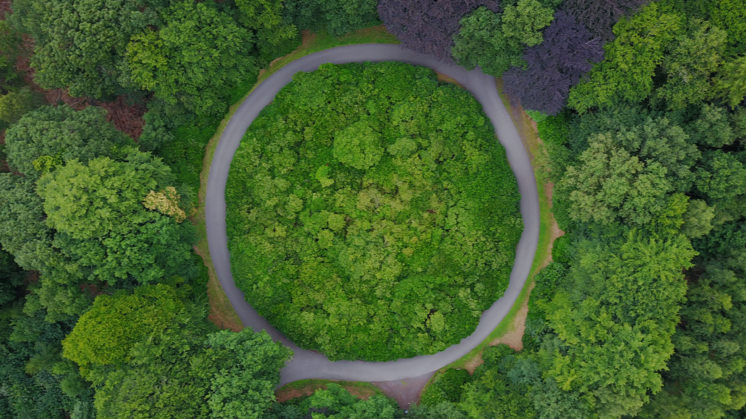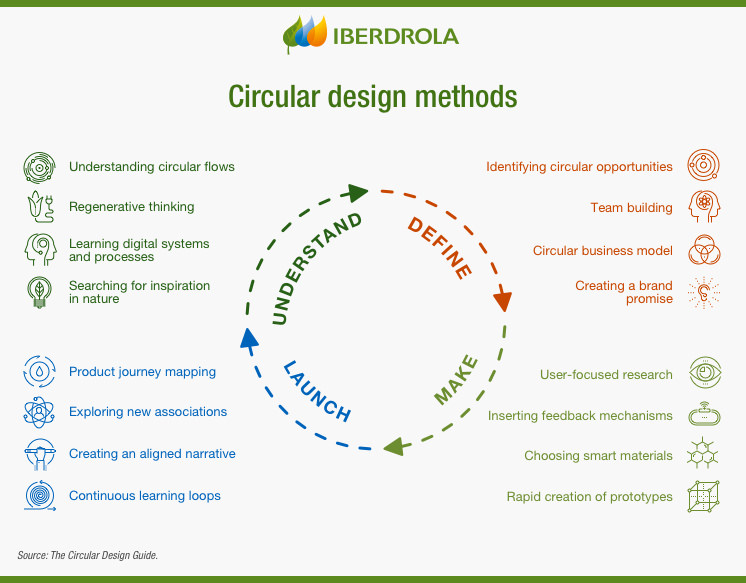Circular design
Circular design: how to rethink the creative process and commit to sustainability
Circular design goes hand in hand with the circular economy, which is committed to reusing products and abandoning the paradigm of using and throwing away. Specifically, this form of design advocates rethinking the process of creating a product from the beginning and, to do so, designers must adopt sustainability and respect for the environment as a starting point.

The concept of the circular economy was born in the 1980s as a counterpoint to the linear economy - that of the throwaway paradigm - when it began to be realised that this system of production and consumption based on the overexploitation of finite natural resources was increasingly unsustainable for the planet. Today, this form of economy is on the rise and can play a key role in the fight against climate change.
The MacArthur Foundation, one of the main promoters of the circular model, defines it as “an alternative that seeks to redefine what growth is, with benefits for society as a whole and, especially, for the environment". It is based on several principles, but one of them emphasizes the importance of reducing pollution levels and waste by design. This is where the concept of circular design comes in.
What is circular design
Circular design focuses on creating products and services for the circular economy, hence its very close linkage. The key lies in rethinking the process from the beginning, so that matter, like biological processes themselves, have a regenerative life cycle for the sustainability of the planet, i.e. it becomes useful repeatedly by being repaired, reused, recycled or transformed.
According to Tim Brown External link, opens in new window., executive director of the US design firm IDEO and a leading proponent of design thinking, circular design involves designing products and their components from the outset with a circular mindset. For example, in the case of a technological device, it would involve thinking from the outset about how to recycle the valuable materials they contain, so that they can be reused in different ways once the device's useful life is over.
External link, opens in new window., executive director of the US design firm IDEO and a leading proponent of design thinking, circular design involves designing products and their components from the outset with a circular mindset. For example, in the case of a technological device, it would involve thinking from the outset about how to recycle the valuable materials they contain, so that they can be reused in different ways once the device's useful life is over.
Principles of circular design
According to The Circular Design Guide, an initiative from the MacArthur Foundation in collaboration with IDEO, the principles of circular design are:
 Understand
Understand
Learn about different circular design solutions and gain a deeper understanding of how to move from linear to circular thinking.
 Define
Define
Articulate a challenge, find opportunities for circularity, whether you are starting a project or revising an existing one, and set goals.
 Make
Make
Understand user needs, exchange ideas, develop concepts, make them tangible by building prototypes and test them in order to learn.
 Launch
Launch
Put the concept on the market in order to gather feedback that will allow the product or service to evolve and generate the necessary changes.

 SEE INFOGRAPHIC: Circular design methods [PDF] External link, opens in new window.
SEE INFOGRAPHIC: Circular design methods [PDF] External link, opens in new window.
Benefits of circular design
A commitment to circular design has a number of advantages that ultimately have an impact on the well-being of the environment:
- Minimises resource consumption and waste generation. It is just as important to choose sustainable materials as it is to reduce the consumption of energy, water and other resources used during their manufacture and subsequent use, as well as the volume of waste generated.
- Optimises production and logistics. The idea is to reduce pollutant emissions as much as possible during these processes, for example, by including proximity criteria in the choice of suppliers.
- Extends the useful life of products. Unlike the culture of programmed obsolescence, which is particularly harmful to the environment, this type of design opts for durable and resistant materials.
- It raises awareness of sustainability. Products designed in this way are increasingly in demand by a society concerned and involved in the protection of biodiversity and the fight against global warming.
Examples of circular design
Making biodegradable packaging, such as those developed with mycelium —the root structure of fungi— by the company Ecovative, facilitating the repair of products, as the clothing brand Patagonia does to repair and reuse its garments, or opting for the modularity of technological components so that their updating and recycling is viable and simple, as in the case of the Fairphone company's telephones. These are just some examples of the impact of circular design.
But is not only smaller companies that are committed to this model. For example, Nike, inspired by the Global Fashion Agenda, has created Circularity: Guiding the Future of Design External link, opens in new window., a guide in which they share a series of principles to promote sustainability in the textile industry. Because, in the words of John Hoke, the multinational's design director, “design has the opportunity to play an important role in making the world a better place".
External link, opens in new window., a guide in which they share a series of principles to promote sustainability in the textile industry. Because, in the words of John Hoke, the multinational's design director, “design has the opportunity to play an important role in making the world a better place".
The lesser-known but increasingly valued ownership model for certain goods and products is another alternative that is gaining ground. Philips is a good example of this. In some architectural projects, the Dutch multinational does not sell its products, but takes over the lighting of the building itself in exchange for a regular payment, thus ensuring sustainable consumption and maintenance.

Circular economy
A new model for sustainable production and consumptio.

Bioeconomy
The challenges of a key model for sustainable development.

Eco-design
How to manufacture sustainable products to satisfy consumers.

A barter market
How to recycle and how to generate less waste.
Circular economy model at the Iberdrola Group
At Iberdrola, we work to be more respectful of nature in our three strategic sustainability areas: climate action, biodiversity protection, and circular economy.
For this reason, our sustainable business model is based on the circular economy model, a system for making the most of resources in which priority is given to reducing the use of new raw materials through efficiency in processes, product life extensions, and a firm commitment to the reuse and recycling of materials.




